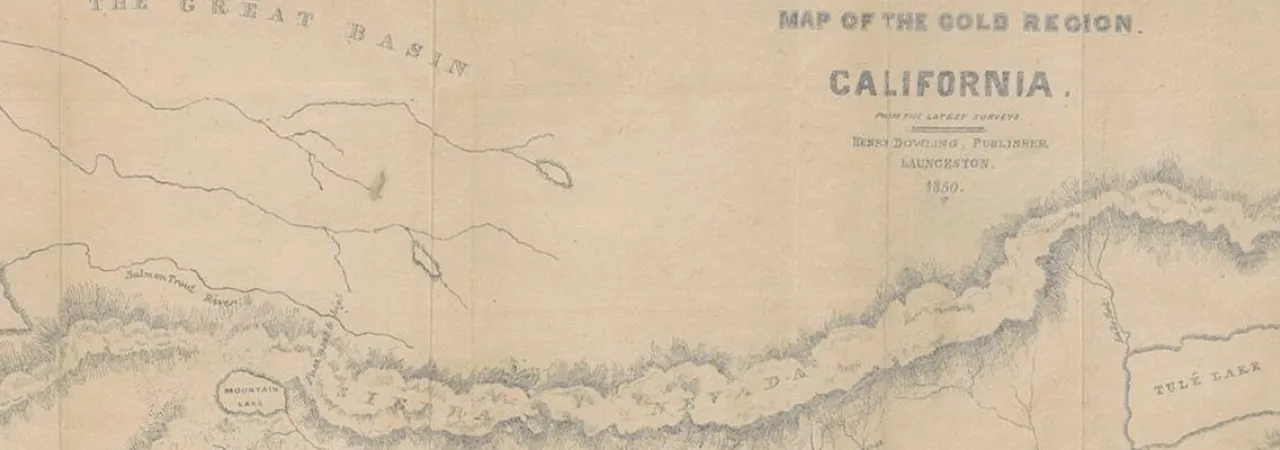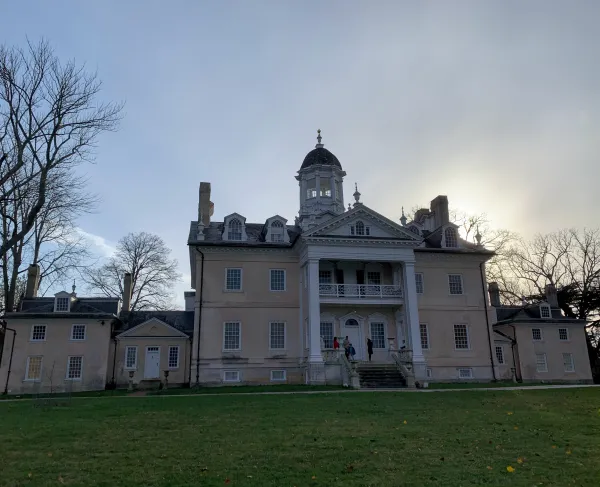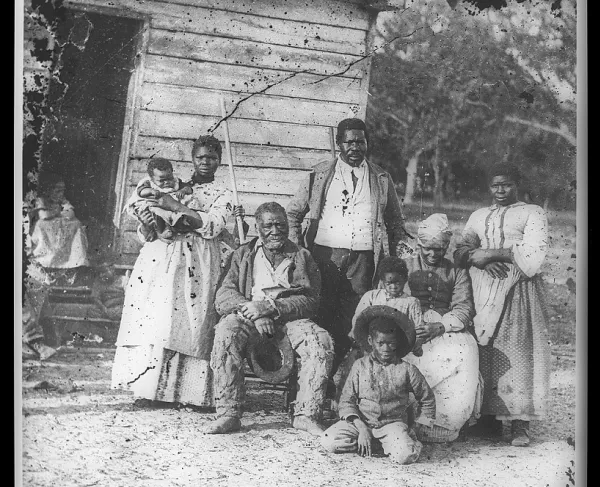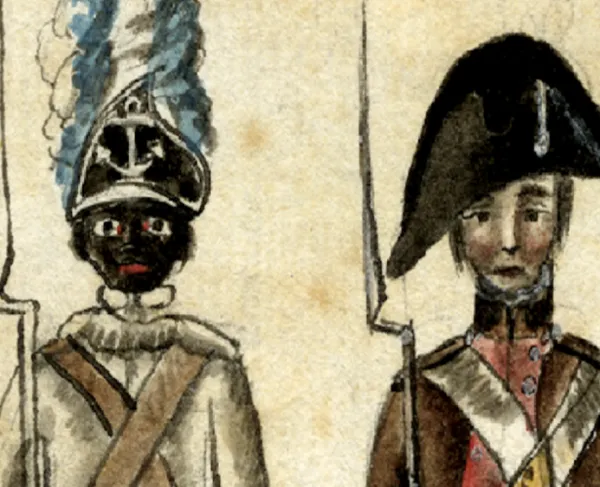
In 1848, a New Jersey-born carpenter and Indian Agent named James Marshall discovered a vein of gold in the Sierra Nevada mountains, not far from the early settlements of San Francisco and Sacramento. Within two years, the chain of events he set off transformed California from a recently annexed and sparsely populated territory to one of the most populated and diverse states in the United States. The California Gold Rush, as it came to be called, intersected with and influenced a variety of historical and philosophical trends in 19th century America, but more directly it set into motion a chain of events that eventually sparked into the American Civil War.
Like most of the western United States, Spain was the first European country to lay claim to the land that made up California, placing it under the Viceroyalty of New Spain. Control soon passed to Mexico after declaring its independence in 1810. Even after almost three centuries of European political dominion, the vast majority of land still lay under the de facto control of indigenous groups and European settlement was sparse outside of a few missionary and ranching settlements. Some Anglo-American settlement increased in the territory in the 1840’s, which lead to the Bear Flag Revolt, along with the Mexican-American War and the annexation of California by the United States soon after. But all of that paled to the waves of immigration that followed James Marshall’s discovery.
Though initially treated with skepticism, once word of gold got out, word spread fast not just across the continent, but across the waves as well. In fact, potential prospectors in Latin America, New Zealand, Australia, the Philippines and even China heard the news months before New York and Boston, since the sea route across the Pacific was still shorter than that from the West Coast of North America to the East before the construction of the Panama Canal. This also meant that immigrants and settlers from these areas were among the first to arrive. Chinese immigration to California during this period is particularly well known, being the one of the first major waves of Asian immigration to the Americas. The overwhelming majority of these immigrants came from the city of Canton (now Guangzhou), on China’s southern coast. The recent Opium War with Great Britain and brewing Taiping Rebellion had made this region of China particularly famine and disease-prone, and it was one of the most open to international trade, putting the population both in desperate situations and better access to escape. Rumors of the fabled “Gum Shan” or “Gold Mountain,” often spread by unscrupulous shipping brokers, played on these desperations and helped attract over 40,000 prospectors to California from 1848-1853, many paying for passage by entering a kind of indentured servitude.

Eventually, of course, word did reach the major cities of the East Coast, setting them alight with excitement. The Westward expansion and settlement movements, already underway well before California’s annexation from Mexico, now rapidly accelerated as the Forty-Niners, as they came to be known, left their homes by the thousands in the hopes to make a fortune out west. Each route had its own risks and dangers which each took a massive toll. For example, a single trip from New York to San Francisco was theoretically simple but involved sailing around Cape Horn at the southern tip of South America, the waters of which were notoriously treacherous and greatly prolonging travel time. While leaving for assignment in California, future Civil War general William T. Sherman boarded a ship bound for San Francisco by way of Cape Horn, and the voyage took a total of 196 days. A popular alternate route involved landing on the Atlantic coast of what is now Panama, traveling overland to the Pacific coast and booking another ship from there. Unfortunately, the towns along the isthmus did not have nearly enough infrastructure to handle so many passengers at once, causing enormous waiting times between ships bound north and giving tropical diseases like malaria and yellow fever the chance to wreak havoc on the Forty Niners.
For those that shunned the sea, there was the overland route, via the California, Mormon or the famous Oregon Trail. Despite often traveling in large groups organized by hastily put-together companies, hostile Native American tribes could sometimes pose a threat, but the greatest danger was, as in Panama, disease. Cholera was particularly common and struck without warning due to its lengthy and symptom-free incubation period, killing up to 12,500 people or 3% of all travelers. Despite the many dangers, California’s population exploded to over 300,000 during the Gold Rush, representing every inhabited continent around the globe. The wild yet cosmopolitan society they forged was among the most unique in American history, and utterly shocked contemporary social reformers and religious figures. It was also unique in that it was majority male, which contributed to its reputation as a haven for criminality and vice, while also laying the seeds for San Francisco’s LGBT community. However, women still filled a variety of roles in Gold Rush society. Wives and widows of prospectors worked alongside the men mining for gold or worked traditional occupations to provide for their families if their husbands failed to strike the motherload. A few managed to find opportunities in professions usually denied to them back home, like studio photography and business management, but some of the more famous women in California fell under the label of “entertainers,” and the line between the legitimate and the seedy underbelly was not always so clear-cut. Ah Toy, one of the most successful business women in California at the time, began her journey in Hong Kong and worked as a prostitute to pay for passage to America. After a few years successfully marketing herself as an exotic treasure, Toy made enough money to run a string of salons and bordellos in San Francisco, Sacramento and many of the smaller boomtowns. This actually made her one of the few of any Chinese immigrants to make a substantial profit from the Gold Rush, until an 1854 court case banning Chinese people from providing testimony limited her ability to legally protect her business.
Even as migrants from across the world made new lives for themselves in California, the majority among them remained American-born citizens, which meant the question of statehood became rapidly prominent as the 1840’s drew to a close, and as with all aspiring states in the antebellum era, slavery proved to be a thorny issue. Within California at least, public opinion was fairly unified: the territory was home to many transplants from the Deep South who supported the institution, but not in California itself, while opponents of slavery feared its potential to undercut the value of white labor. During the 1849 California Constitutional Convention, all delegates, even those from Southern states, unanimously upheld the motion to abolish slavery in California. But in Washington, the issue provoked several heated debates in Congress that nearly caused a crisis. The entire California territory entering as a single free state threatened to upend the delicate balance in the Senate between Free and Slave States since the Missouri Compromise in 1820. To placate the Southern constituency, House Speaker Henry Clay presented California’s statehood bill as part of a package deal which included, among other things, the infamous 1850 Fugitive Slave Act. California officially became a free state on September 9th of that year, but the Fugitive Slave Act Congress passed along with-it infuriated people in Northern states and split the ever-widening divide between North and South even further.





